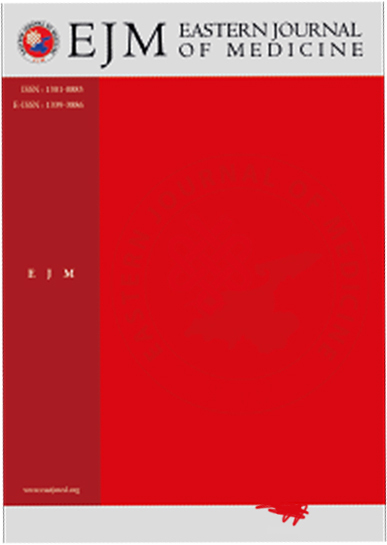The effect of neuromuscular electrical stimulation therapy on stress urinary incontinence recurrence: A randomized prospective study
erbil karaman1, Şeyhmus Kaplan2, Ali Kolusarı11Department of obstetric and gynecology, Medical Faculty, Van Yuzuncu Yil University, Van, TURKEY2Department of Sports Medicine, Mecial Faculty, Van Yuzuncu Yil University, Van, TURKEY
INTRODUCTION: The urinary incontinence poses a health problem in community. The standard care for stress urinary incontinence (UI) is surgical therapy. However there are several methods for prevetion of UI recurrence in these patients. Here, we aimed to evaluate the effect of functional electrical stimulation therapy on stress urinary incontinence recurrence in the postoperative period.
METHODS: Patients who had stress UI and underwent anti-incontinence surgery in our Universitys Hospital Gynecology Department were randomly divided into two groups. The group 1 received postoperative electrical stimulation of pelvic floor muscles twice in a week (30 minutes) for 4 weeks plus Kegels exercise and group 2 received only postoperative Kegels exercise for prevetention of UI recurrence. After completion of therapy, the patients were assesed for urinary recurrence by Wagners Quality of Life scores Turkish version, pad test and urinary diary.
RESULTS: A total of 48 patients were included in the study. All patients had anti-incontinence surgery of which 39 had transvaginal tape (TVT), 7 had transobturator tape (TOT) and 2 had Burch Colposuspension procedure. The main predominant diagnosis was Stress UI in all cases. 20 patients included in group 1 and underwent electrical stimulation with Kegels exercise and 28 patients included in group 2 which had only Kegels exercise in postoperative period of one month. The demographic characteristic in terms of age, body mass index, gravidity, parity and co-morbid disease did not show any statistical difference(P>0.05). The rate of recurrence in UI was significantly lower in Group 1 than Group 2, respectively (2/20, 10% vs 5/28, 17.8%, p<0.05). The mean Qulaity of life scores in group 1 was statistically significantly lower than group 2(7.3±6.2 vs 18.4±6.52, p<0.05). The pad test result did not show any statistical difference (5.4±4.2 gr vs 7.4±6.4 gr, p>0.05).
DISCUSSION AND CONCLUSION: The electrical stimulation of pelvic floor muscles in postoperative period seems to be effective in prevention of UI recurrence and may be a good strategy to improve the Quality of Life of patients.
Manuscript Language: English














